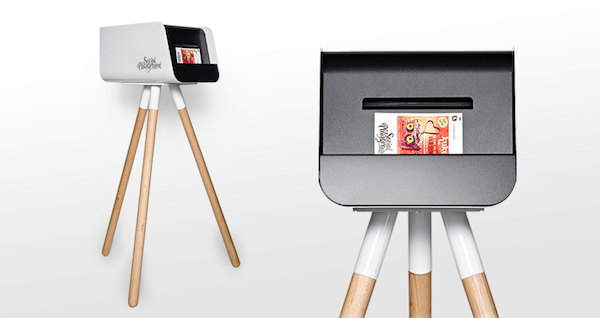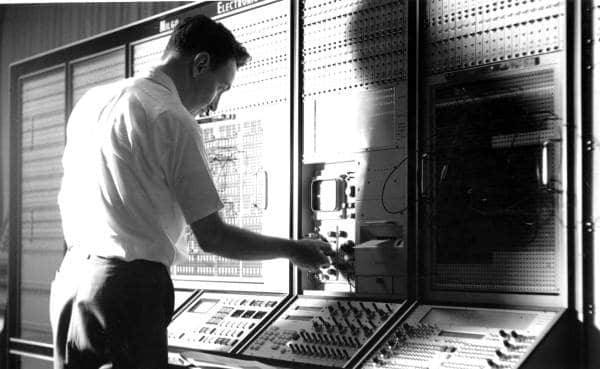Event Technology: A Guide
In recent years, we have seen technology progress at a remarkable rate within the events industry. The general shift is towards empowering the delegate and making them more central to every aspect of the event. Technologies that enhance their experiences and deliver better and better events are seeing significant amounts of investment. Numerous start-up businesses are busy exploring innovative solutions to age-old problems.
As with any new technology, it is greeted by those of us within the events world with a mixture of excitement and trepidation. There’s the huge potential for it to revolutionise how we operate yet this is always tempered by a consideration of the risks involved in being amongst the first to adopt these emerging technologies.
Mark Walker, Eventbrite’s Content Marketing Manager, sums up the rewards nicely: “Emerging technologies offer event organisers willing to experiment an unparalleled chance to stand out from the crowd, offer truly unique experiences to attendees and bring their events into the future.”
In our guide, we examine the current state of technology in the events industry as well as looking into our crystal ball at what the future may hold.
Types of Event Technology
Our guide focuses on the following areas of event technology:
- Web-streaming
- Hybrid Events
- Virtual Reality
- Biometric Tech
- B2B Matchmaking
- Beacons
- Holograms
- Projection Mapping
- Gamification
- Social media
- Big data
- Wearables
- RFID (Radio Frequency Identification) and NFC (Near field Communication)
- Mobile Apps
- Ticketing and Registration
- Environmental
What are the Uses of Event Technology
Event Technology can be used to do any or a combination of the following:
- increase event attendance – both in real-life and virtually
- increase engagement – audience participation and interactive elements
- improve ticketing and registration processes
- collect big data on attendee behaviour
- monetise events
Enhancing Events with Technology
Live Video Streaming / Web-streaming
A fairly common aspect to many events and conferences today is the use of web-streaming. The technology has been refined to the extent that people across the globe can now watch real-time HD video streams of conference sessions via the Internet. This means that as an event organizer you have the potential to reach attendees all across the world, allowing them to experience your event regardless of their location.
In terms of technological advances, the focus has been on improving the quality of the stream across devices such as mobile and tablet as well as allowing viewers to pause and rewind the stream whilst still then being able to return to the live broadcast. There are numerous free and paying services such as uStream and Livestream that assist you in broadcasting your event in real time.
Drones
As drones have come down in size and price, they have become even more accessible to event organisers. Despite the previous bad press, drones provide the opportunity for 360-degree filming, as well as aerial filming and photography. Perfect for both live streaming and post-event highlight videos.
Hybrid Events
What are Hybrid Events?
Hybrid events combine a live event with an element of virtual or online participation and are a big step up from web-streaming. These types of events are great for growing your audience, in particular on an international level, and boosting brand exposure for you and your sponsors.
Attending events isn’t always economically viable – there’s the time out of the office as well as the transport and accommodation costs to consider. Hybrid events allow individuals to attend and speakers to present without them needing to leave the office. With this in mind, it is the virtual component that is key and perhaps the most interesting as we look to the future.
The virtual aspect can be split into two categories – virtual attendance and virtual presentations. With the former, you can make it possible for people to virtually attend your event where they can watch and interact with a presentation in real-time, asking questions, joining debates on social media and even receiving and sharing documents. It is also possible for presenters to deliver sessions without being at the event itself – this can occur through a video interface or even by using holograms (more on this later).
There are some clear benefits of a hybrid event for event organisers. Not only does your event have a much larger reach, but you can also extract pertinent data as you track what virtual attendees watch and how they engage with it. You can add further value by making the sessions available online, providing an archive of video presentations. It’s important to consider, however, how to engage your online attendees in the breaks between sessions when networking would ordinarily take place.
Virtual Reality and Events
In gaming, films and even news coverage, Virtual Reality (VR) is relatively well-known but in recent times it is finding fascinating application in the events industry. The potential for VR to enhance event experiences for attendees is huge as well as opening up a whole raft of opportunities for more immersive virtual attendance.
Some event organisers are employing virtual reality components at the event itself to further engage the attendees. Brands too have been quick to develop bespoke 3D immersive experiences to make an impression on attendees. Here is a VR experience that Inition developed for Nissan back in 2012 for the Goodwood Festival of Speed Event:
Virtual reality headsets are also being used to allow delegates who can’t make it in person to connect to a device and experience the event virtually. Through incredible advances in technology, they have the potential to experience the event as if they were there, walking around exhibition stands, watching sessions and even networking with other virtual attendees.
Oculus Rift
At the forefront of virtual reality is the Oculus Rift headset. Bought by Facebook for $2bn, this head-mounted display delivers immersive virtual reality experiences. Simon Usborne writing in the Independent described the Oculus Rift as “essentially a cinema screen that you strap to your face, it also senses each tiny movement in your head, adjusting the view of whatever is being displayed in such a way that puts you into that world, be it a computer game or a recording of a real event.”

By Sergey Galyonkin from Kyiv, Ukraine (Orlovsky and Oculus Rift Uploaded by Yakiv Gluck) [CC BY-SA 2.0] via Wikimedia Commons
With Oculus Rift, you can explore whole virtual cities, with designers able to simulate real-life situations with increasing accuracy. Creating a virtual event is well within the technology’s capabilities where attendees would be free to walk around 3D event venues and have virtual experiences that mirror the real-life ones.
The following companies are working with VR and events:
Google Cardboard and Samsung Gear VR
Alongside Oculus Rift, you have cheaper alternatives to full VR headsets that work with smartphones. These devices focus more on the software rather than the device. Google Cardboard powered by Project Tango research aims to make mobile devices that can ‘see as we see’ to offer more sophisticated VR experiences.
According to the Tango website, “Project Tango is an attempt to create a mobile device unlike any other, a mobile device that shares our sense of space and movement, that understands and perceives the world the same way we do.” This has other potential uses for event professionals in that it can be used to map out venues, providing you with a 3D, 360 degree view of the spaces, including all relevant dimensions to refer to later.
The Samsung Gear VR headsets are similarly designed to be comfortable and affordable headsets that allow users some insight into the possibility of VR without the large upfront costs.
Biometric Tech
These days we’re used to using biometrics on a daily basis; unlocking a smartphone with a thumb print or using our voices to log into an account or app. As well as using biometric technology for security reasons, events can now leverage this technology for data capture. At the end of 2016, eBay opened up the world’s first ‘emotion-powered’ pop up shop where it used biometric tech to monitor people’s body language and facial reactions to different products. Biometric tech is an ideal way to capture peoples’ thoughts about presentations, performances and even your event as a whole.
B2B Matchmaking
Smart event networking software such as Grip uses advanced algorithms to match event attendees with valuable connections. The success of an event is often measured on the amount of connections made – therefore investing in a B2B matchmaking platform which will enable your attendees to meet their business goals faster is a win for everyone.
Beacons
By leveraging the Bluetooth technology in your smartphone, Beacons allow you to send attendee messages at specific locations. With real-time messaging, you can choose to show tailored messages to attendees in different locations of your event. For example, if you want to gather feedback about the sessions and speakers at your event. You can set up a beacon so when attendees pass by it on their way out from a session, it’ll prompt the event app to open that session’s survey.
Beacons can also be connected to platforms like LinkedIn and Twitter, allowing attendees to find networking opportunities and then receive directions to the stand or location.
Holograms and Events
Holographic display technology (basically, advanced forms of holograms) can be utilised in events in a number of ways. Speakers can use 3D hologram visuals to enhance their presentations and make them more engaging. We are starting to see more holographic speakers presenting at events – speakers who can’t be at the event physically are recreated in hologram form and are able to interact with the audience in real-time. In a recent Q&A event, Professor Stephen Hawking was beamed to the Sydney Opera House from Cambridge University’s video conferencing studio to answer questions on physics. Musion is one of the companies pushing holographic technology for corporate events and beyond.
Spatial Augmented Reality (SAR) / Projection Mapping
Projection Mapping or SAR involves creating bespoke large-scale 3D images that are then projected onto a building or other external surface. The process involves advanced computer software mapping a virtual version of the surface and then creating images to be projected. Brands are adopting Projection Mapping to deliver impressive audio-visual 3D projections either as events in themselves or to enhance a main event. These displays can really showcase the architectural features of a unique events venue and deliver that all important wow factor.
Gamification of Events
With mobile apps like EventMobi, you can add in fun game-like elements to your event to help increase engagement. You can introduce challenges, get people to collect items on their way around the venue and even encourage interaction with other delegates.
As well as increasing engagement, the gamification of events further breaks down the boundaries of what an event experience is supposed to be like. Cathy Key believes that by gamifying aspects of conferencing you can help focus attendees’ attentions and make them active participants rather than passive, ultimately making the event more rewarding. Companies like Brightline offer iPad games for two players as well as other playful social media apps designed to increase engagement.
Social Media and Events
Social media is now ubiquitous at all types of event but beyond the #hashtag and marketing campaigns, there is a whole world of opportunity where technology and a sense of fun work together to increase event engagement.
There are various versions of Twitter walls where live tweets are collated and visualised for people to see. Social Playground and The Photo Booth Guys offer Instagram printers for events where attendees can print customised and branded photos around event hashtags. Other companies provide all you need to dress up and shoot your own videos at events ideal for sharing on social media. All of these activities combine to really propel your event into the social media space and maximise exposure.

Image via https://socialplayground.com.au/instagram-printer/ – no known copyright.
Big Data and Events
What is big data?
When it comes to events, big data refers to using technology to gather very large amounts of data that can then be analysed by computers to reveal patterns and associations. These patterns can provide fantastic insights into audience behaviour. There are various high-powered event analytics platforms that help process and sort this data into meaningful information and valuable insight. This can then help improve everything from event budgeting to finding the optimum length of presentations.
Registration and Ticketing Technology
Wearables and Events
Wearables are a form of technology that, you guessed it, you can wear or that is incorporated into your clothing. Its most common adoption has been in healthcare to monitor patients on a daily basis. However, wearables can be used to track the movements of attendees at your conference to see which sessions they attend, which stalls they visit and where they congregate to network. This can all feed back into big data to help you improve your event. As well as this, wearables can be used to replace paper tickets and have the potential to be used to pay for items and therefore further monetise events.
RFID (Radio Frequency Identification) and NFC (Near field Communication)
Both RFID and NFD refer to technologies that enable the wireless transfer of data. RFID is based around tags that are attached to objects whereas NFD uses chips to transfer small amounts of data at close range using enabled cards and devices – this includes Contactless Payment and Oyster Cards as well as some smartphones.
These technologies can improve the registration and ticketing of events and conferences. You can have RFID wristbands as a form of wearable technology to replace paper tickets and streamline the registration process. There is also mobile technology being developed either around NFD or using low-frequency Bluetooth that can perform a similar function, allowing you to enter an event and even make purchases without a laborious manual process. It is not inconceivable to imagine in the near future being able to have a smartphone ticketing app for your event that then allows attendees to transfer data and buy products using this technology.
As well as ticketing, RFID, NFC and mobile apps can be used to create tap points which enable you to provide delegates with relevant information to enhance their event experience. All of the content they receive when they tap their device is carefully managed and then tracked by you, providing further insight into their behaviour. One company leading the way in this field is Excelerated Apps. As well as this, RFID technology can be used to monetise aspects of the event, with attendees being able to make purchases by simply tapping the RFID tag.
Mobile Apps
There are numerous mobile apps available to help enhance your event in various ways. See our Guide on Mobile Event Apps for more information.
Event Technology and the Environment
You can utilise technology, in particular apps to go paperless at your event, but there are other options to help you deliver more environmentally-friendly events. You may want to consider using solar or kinetic energy to power certain aspects of your event. How about getting attendees to pedal a bike in order to charge their phone? Or use a solar-powered PA system? As much as these may seem like gimmicks, they help to raise awareness and reduce the carbon footprint of your event. Organisations like Global Inheritance are using innovative event installations to educate people about energy and the environment.
20 Bedford Way Central London Event Venue
As much as event technology has changed the way we deliver events, the basic requirements remain the same. You still need a venue with personality that is available on a modest budget with excellent transport links and that’s where 20 Bedford Way comes in. We bring together state-of-the-art facilities within our iconic Central London brutalist building, leaving the rest up to the event planner and the technology at their fingertips. To view our event spaces or find out more then call today on 020 7612 6143 or make an enquiry.
Header image is of a Technician operating computer – Miami, 1965 via State Library and Archives of Florida




